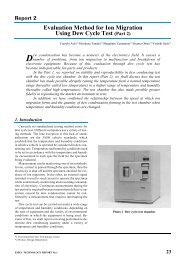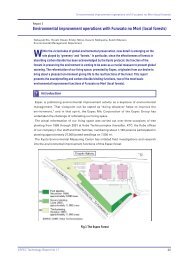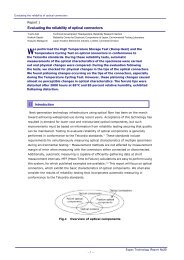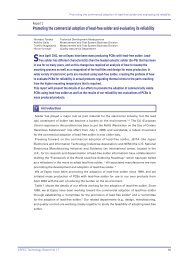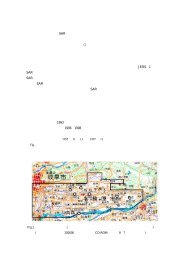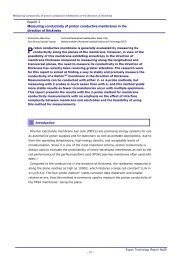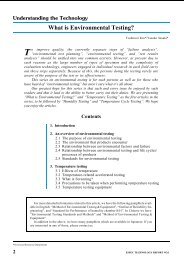download
download
download
Create successful ePaper yourself
Turn your PDF publications into a flip-book with our unique Google optimized e-Paper software.
Measuring Conductivity of Proton Conductive Membrane in the direction of thickness, partⅡ:<br />
using the 4-probe method in the direction of thickness<br />
Report<br />
Measuring Conductivity of Proton Conductive Membrane in the direction of<br />
thickness, part Ⅱ: using the 4-probe method in the direction of thickness<br />
Shuhua Ma, Hirokazu Tanaka Technical Development Headquarters<br />
P<br />
roton conductive membrane has been reported to exhibit anisotropic<br />
properties in its in-plane and thickness directions in such areas as crystalline<br />
structure, dimensional stability, and proton conductivity. 1),2) Generally, the<br />
conductivity of proton conductive membrane is measured only in the in-plane<br />
direction due to the availability of well-developed methods. However, these<br />
measurements do not provide a complete and accurate grasp of the conduction<br />
properties of a membrane. As a result, methods of measuring ion conductivity in the<br />
direction of thickness are urgently required, especially with the successful use during<br />
recent decades of proton exchange membranes in polymer electrolyte membrane fuel<br />
cells (PEFCs). Unfortunately, an accurate and reliable method has yet to be<br />
established for measuring ion conductivity in the direction of thickness of the<br />
membrane.<br />
Usually, higher accuracy is attained using the 2-probe and 4-probe methods to<br />
measure conductivity in the in-plane direction. At Espec, we have investigated the<br />
possibility of applying these methods for measuring conductivity in the direction of<br />
membrane thickness. Preceding reports 2),3),4) have discussed the effects of interface<br />
complexity and contact quality between test membrane and electrodes, and have<br />
verified the feasibility of employing the 2-probe method for measuring ion<br />
conductivity in the direction of thickness. On the other hand, the 4-probe method can<br />
yield much more accurate measurements than the 2-probe method because it uses<br />
reference electrodes to sample electrical potentials on both sides of test membranes.<br />
This report will present results obtained using the 4-probe method in the direction of<br />
thickness for measuring the conductivity of ion exchange membranes.<br />
- 1 -<br />
Espec Technology Report No.23



